Contents
Persimmon is a very interesting berry, and its main feature is the ripening time. The harvest of orange fruits will sing from October until frost itself. It is believed that only frozen persimmon should be picked from the branches, then it will be juicy and get rid of astringency. It turns out that in the autumn-winter season, persimmon is the only source of fresh vitamins and microelements such as iron, iodine and many others. The only drawback of tasty fruits is their short shelf life. To enjoy fragrant persimmon longer, housewives make preparations from this fruit for the winter.
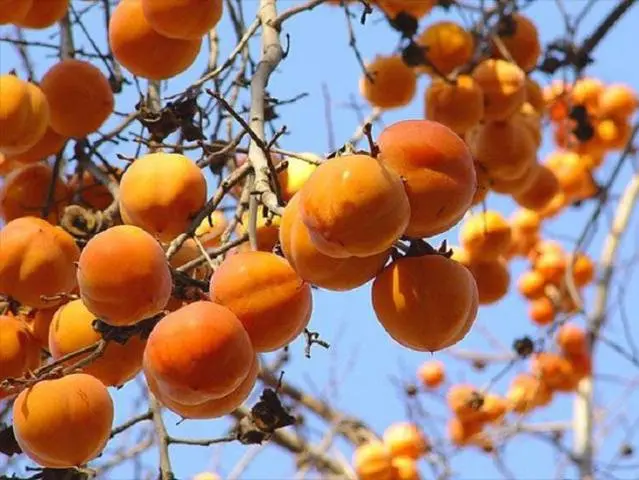
What blanks can be made from persimmons for the winter, and what recipes are better to use – this will be an article.
How to choose the right persimmon
The fruits are usually plucked from the tree when they are soft enough. It’s believed that only in mature berries there is no tannin – a substance that causes an unpleasant astringent effect.
Today there are many varieties of persimmon, some of which grow only in the subtropics or in tropical climates, others can be grown even in the Caucasus. Fruits of different varieties differ in appearance and taste.

To choose a good persimmon, you should pay attention to:
- softness – the fruits must be ripe, but not overripe or rotten;
- brown streaks on the peel indicate that the persimmon was harvested on time;
- the leaves on the berries should be dry, brown;
- the shape and size of the fruit can be any – here a lot depends on the variety.
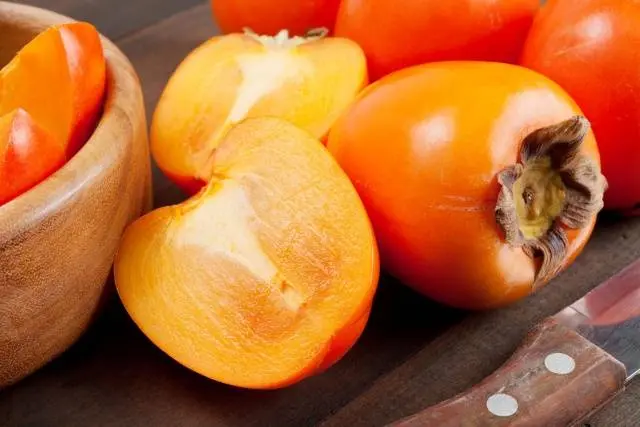
When fresh, properly harvested persimmons can be stored for up to three months. This is a fairly long period, but the difficulty lies in the need for suitable storage conditions. In order for the fruit to last until spring, it is necessary to maintain a constant temperature in the storage within 0 – +1 degrees, humidity – about 90%. It is also recommended to place boxes with fruits that emit ethylene (bananas or apples) next to persimmons.
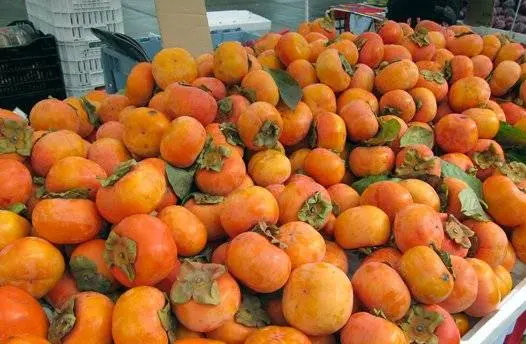
As seen, at home, it is very problematic to keep fresh persimmons, so people have come up with a lot of options for blanks from this berry.
How to freeze persimmon
After the advent of household freezers, freezing any vegetables and fruits has become commonplace. Persimmon is no exception, it can also be frozen, but the temperature in the freezer should not be higher than -18 degrees.
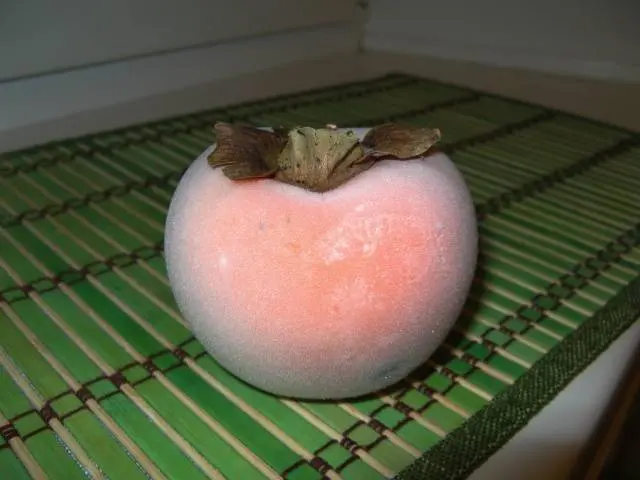
To get rid of astringency, it is enough to freeze the fruit for several hours. And there is another option of freezing fruits for the whole winter, because they can lie in the freezer for more than six months.
As you know, most of the vitamins are preserved in frozen foods, so there is a sense in freezing persimmon persimmons, and it is considerable. You just need to be able to properly make such blanks for the winter.

Proper freezing of orange fruits is as follows:
- If the berries are frozen whole, they are first washed, then completely dried. After that, each persimmon is wrapped in several layers of cling film and carefully folded into the freezer chamber.
- You can cut the fruit into slices to later use as a blank for pies, cereals and desserts. Sliced uXNUMXbuXNUMXbsections are laid out on polyethylene, which cover the bottom of the container. Top fruit should be covered with a lid or several layers of film.
- It is very beneficial to freeze persimmons in the form of mashed potatoes. To do this, take out all the pulp from the fruit with a teaspoon and grind it with a blender. Arrange in cups or other plastic containers. When necessary, the workpiece is taken out and added to hot porridge in frozen form or thawed and eaten as a fresh dessert.

How to wither a persimmon
This juicy and fleshy fruit can be dried. To do this, choose denser berries and tie strong ropes or threads to their stalks. Persimmons are hung in a dark, well-ventilated room with a cool temperature.

After 7-8 days, a white coating forms on the fruits – this will release sugar. Starting from this day, it is necessary to regularly (once every two days) slightly knead the fruits with your hands. Thanks to such actions, the dried persimmon will be soft enough.
How to dry persimmon
Fragrant fruits with a honey taste can also be dried. The preparation of such a blank usually takes place in industrial conditions, where the berries are laid out on mesh pallets and dried in the open air for several weeks. But for such drying, a tropical climate is needed, and in Our Country winter is not the best time for this kind of harvesting.
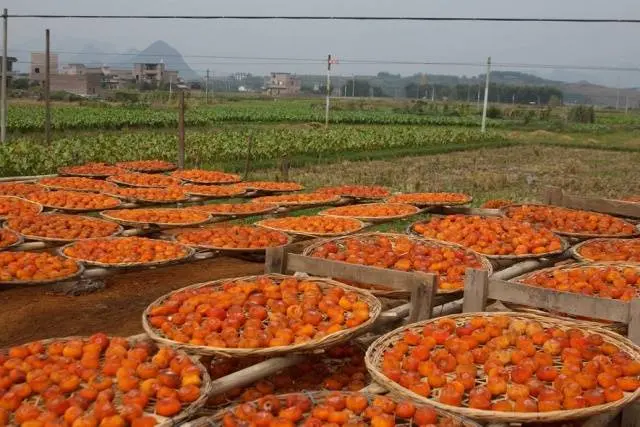
Of course, housewives can use an electric dryer. For drying, unripe dense fruits are selected and cut into thin slices.
You can try to make a dried blank using a conventional oven. To do this, the fruit is cut into thin slices, sprinkled with lemon juice to taste, sprinkled with sugar or cinnamon and placed in a preheated oven.
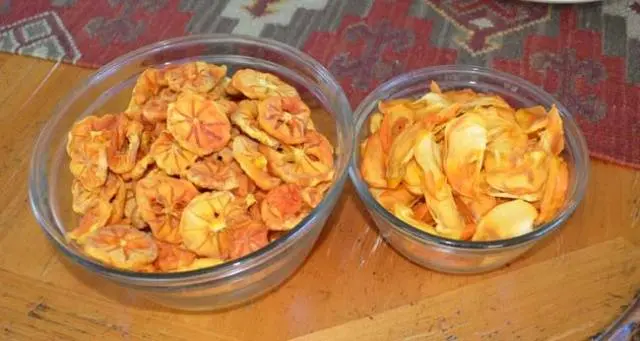
To store the dried blank for a long time, you can dry the persimmon in the oven with the door open. This will take about seven hours, the fruits will need to be cut into four parts and the seeds removed. After cooling, the dried billet is laid out in cardboard boxes and stored in a dark, dry place.
How to make jam or jam
No less popular is the harvesting method, which involves the heat treatment of orange berries – blanks in the form of preserves and jams. The recipes for such blanks are very diverse: boil persimmon with sugar, add lemon, oranges, apples and other fruits.
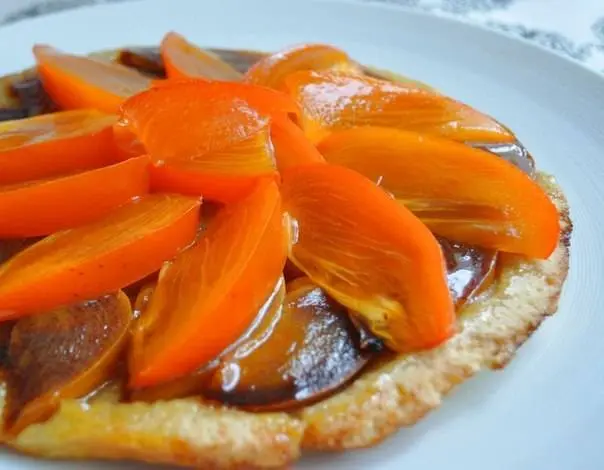
To get jam, all the ingredients are ground with a blender or meat grinder. Jam is made from pieces or even quarters of the fruit.

Whole fruits preserved in apple juice
Such preparation for the winter is usually done by those housewives who have their own apples growing on the site. Absolutely any apples are suitable for this blank, but it is better to take those varieties that are juicy.
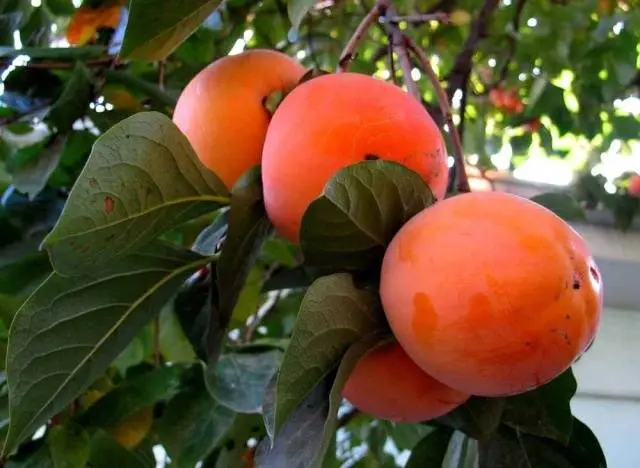
So, they make a blank in several stages:
- Juice is squeezed out of 6 kg of apples using a juicer.
- Filter the juice and bring it to a boil.
- Choose 2 kg of dense persimmon, peel it and cut it into 4-6 parts, taking out the seeds along the way.
- Fruit slices are laid out in sterile jars and poured with boiling apple juice.
- It remains to roll up the blanks and lower them into the basement.
How to make wine
Excellent wine can be obtained from overripe berries.

It’s easy to prepare:
- persimmon, in the amount of 5 kg, cut into several parts, remove the bones;
- put the slices in clean wine bottles;
- syrup is made from 5 liters of water and 1,75 kg of sugar;
- fruits are poured with slightly warm syrup;
- within five days the wine should ferment;
- after that, it is drained, the pulp is squeezed out and placed under a water seal;
- when the fermentation is over, the wine is drained from the sediment and taken out to the cellar;
- after a month, the finished product can be filtered and bottled.

There are a lot of options for fragrant persimmon preparations. You should definitely try at least one of the ways, because this tropical berry is sold fresh for only a few weeks.









